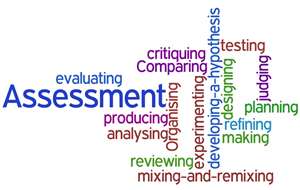My social studies methods
instructor, Dr. Smirnova, provides my classmates and I with a lot of useful
research articles and videos. All of the information I have read from the
research articles posted on our e-class page have been helpful to me throughout
my experience this semester. I have not read any that have been a waste of
time. I have taken notes and recorded key ideas, tips, or instructional methods
I can try in the future. Since I am a visual learner, I have found the videos
to be excellent guidance for myself. More specifically, the video on
inquiry-based lessons has directed me to be able to plan my own inquiry lessons.
For an inquiry lesson, the students
need to identify a problem or question. In order to look into and examine the
situation, the students must keep in mind the question or problem cannot have a
simple solution. “Through
using evidence to investigate historical questions, students are given the
opportunity to see that history is not just a collection of facts, but rather a
rigorously constructed set of arguments” (“What is an Inquiry Lesson?” n.d.).
The problem must be complex in order for research to be conducted. If the problem is complex, the
different pieces of evidence will contain different viewpoints. This calls for
the young minds to look past their initial standpoints and interpret a problem
based on the evidence they received. Secondly, the teacher should organize
students into collaborative groups. This will differentiate depending on the
teacher. Some teachers split students up based on their abilities, interests,
or according to a seating chart. I originally thought that groups were always
randomly assigned. I personally would want to try several different ways out to
observe how my students work with one another before picking the best approach
to organizing my students.
During the inquiry process, the teacher is to assist the
students. The main point in helping each group is to keep their minds
questioning the condition. The students are to be thinking from a variety of
perspectives on the situation. In the video, a kindergarten teacher was using
inquiry for a science lesson by having her students investigate seashells.
Every student in each group had a seashell to look closely at with a magnifying
glass. The teacher came over to one group and asked a girl what she sees. The
girl told her she sees a lot of lines that are cracked. The teacher then asked why
she think there are multiple cracks in her shell. The girl told her teacher
that maybe it is from the water. As the student investigates her seashell, the
teacher puts more questions out to help the girl come closer to figuring out
her problem. When I help my students, the important part I will be conscious of
is not assisting too much or too little. If I assist too much, then I will end
up leading the students right to the solution or solving the problem for them.
If I do not assist enough, then the students may be discouraged and give up in
the investigation.
Problem-based learning is to be used in all grade levels and
helps students to learn adult roles of being provided with a problem situation
and having to use problem-solving skills to investigate.
~ Christine Brown
References
Teaching History.org, home of the National History Education
Clearinghouse. (n.d.). Retrieved April 4, 2015, from
http://teachinghistory.org/teaching-materials/teaching-guides/24123

No comments:
Post a Comment